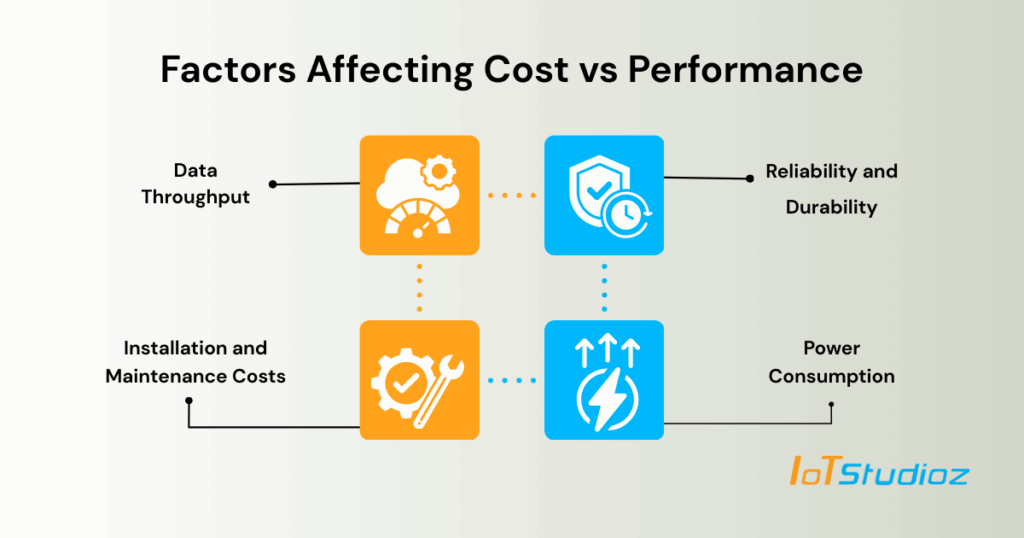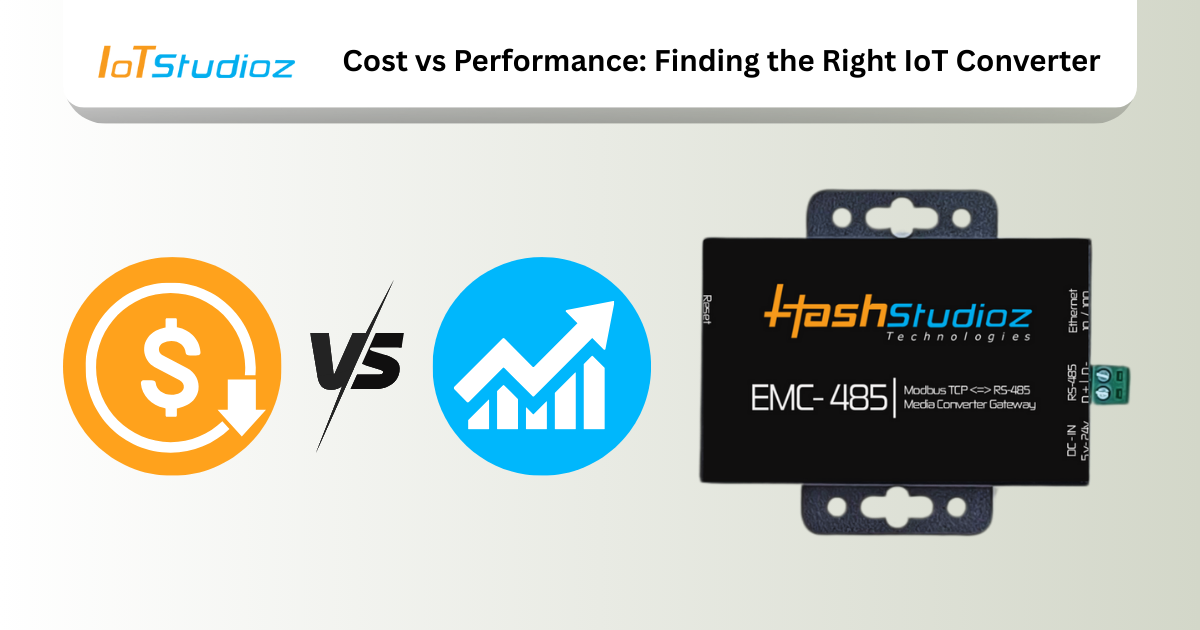The rapid growth of the Internet of Things (IoT) is pushing industries to adopt smarter, more efficient ways to connect devices. One of the most important components in an IoT system is the converter, which facilitates communication between different types of networks. One common converter type is the RS-485 to Ethernet converter, a device designed to bridge the gap between industrial serial communication (RS-485) and modern Ethernet networks.
Selecting the right IoT converter requires balancing cost and performance. It explores the key factors involved in choosing the right RS-485 to Ethernet converter, examines how cost influences performance, and highlights considerations to make when selecting a converter that fits your needs.
Understanding RS-485 and Ethernet
Before diving into the specifics of RS-485 to Ethernet converters, it’s important to understand the technologies involved.
- RS-485 is a standard used for serial data communication over long distances. It is widely used in industrial applications due to its ability to support multiple devices on the same bus and its robustness in harsh environments.
- Ethernet, on the other hand, is a high-speed, widely used networking protocol for local area networks (LANs). It provides fast data transmission and is the backbone of most modern digital communication systems.
While RS-485 and Ethernet serve different purposes, many IoT systems require devices that can communicate across both technologies. This is where the RS-485 to Ethernet converter comes into play.
What is an RS-485 to Ethernet Converter?
An RS-485 to Ethernet converter is a device that enables communication between RS-485 networks and Ethernet networks. It takes data sent over RS-485 and converts it into a format compatible with Ethernet protocols, and vice versa. This conversion allows legacy RS-485-based systems to integrate with modern IoT infrastructures that rely on Ethernet-based communication.
Some of the key features of an RS-485 to Ethernet converter include:
- Bidirectional communication: It supports two-way data flow between devices on RS-485 and Ethernet networks.
- Protocol conversion: It enables the translation of serial data into packets that can be understood by Ethernet-based devices.
- Long-distance communication: RS-485 supports long-distance communication, and Ethernet can provide high-speed data transfer across networks.
These converters are essential for industries that rely on older equipment but want to leverage the advantages of Ethernet networking and IoT capabilities.
Factors Affecting Cost vs Performance
When selecting an RS-485 to Ethernet converter, it’s critical to assess the cost versus performance trade-off. While higher-priced converters may offer better performance, there are also budget-friendly options that may suit smaller or less demanding applications. Let’s break down the primary factors affecting cost and performance:
1. Data Throughput
One of the most important performance metrics for any IoT converter is data throughput. This refers to how much data the converter can handle within a given time frame, typically measured in kilobits per second (Kbps) or megabits per second (Mbps).
- High throughput converters can handle large amounts of data quickly and are suitable for applications like real-time monitoring or video streaming.
- Low throughput converters are sufficient for applications like sensor data collection, where smaller amounts of data need to be transmitted.

Converters with higher throughput capabilities generally cost more, but if your application requires high-speed communication, investing in a higher-end converter may be necessary.
2. Reliability and Durability
Reliability is another critical performance factor, especially in industrial settings. An RS-485 to Ethernet converter must operate 24/7 in environments that may have temperature extremes, electrical noise, or physical vibration.
- Ruggedized models are designed for harsh industrial environments and typically come with better enclosures, certifications, and extended warranties. These models often carry a premium price.
- Standard models may be more affordable but may not withstand challenging conditions as effectively.
It’s important to evaluate the environment where the converter will be used before deciding how much to spend on durability features.
3. Installation and Maintenance Costs
Converters that are easy to install and require less maintenance often come at a higher price. More expensive models may feature plug-and-play installation and offer advanced diagnostics, making them easier to maintain over time.
- Low-cost models might require more manual configuration and troubleshooting, leading to higher labor costs.
- Premium models may come with features such as automatic IP configuration, which reduces the setup time and minimizes the need for ongoing technical support.
When calculating total costs, be sure to factor in any installation and maintenance expenses.
4. Power Consumption
Power consumption is a crucial aspect to consider, especially for large-scale installations where many converters are in use. More energy-efficient converters will typically cost more upfront but can result in long-term savings.
- Low-power converters are often designed for edge devices or remote locations, where power sources may be limited.
- High-power converters can handle larger data volumes and may be suitable for applications requiring heavy-duty performance.
For energy-conscious organizations, selecting a converter with low power consumption could help mitigate operational costs over time.
How to Choose the Right RS-485 to Ethernet Converter
Choosing the right RS-485 to Ethernet converter depends on the unique needs of your application. Below are some key considerations to help you make an informed decision:
1. Application Needs
First, consider the specific requirements of your IoT application:
- Will you be transmitting large amounts of data quickly, or is low data throughput sufficient?
- Will the converter need to withstand harsh environments, or is it intended for office use?
Your application’s needs will largely determine whether a low-cost or high-performance converter is required.
2. Budget Constraints
The budget is always a significant factor in any purchasing decision. While premium models offer better performance and durability, budget-conscious applications may only require basic functionality.
It’s important to evaluate the cost of the converter not only in terms of its initial purchase price but also its total cost of ownership, including installation and maintenance.
3. Performance Requirements
As mentioned earlier, performance requirements vary. Higher-end converters are suited for applications where data speed, reliability, and uptime are critical. However, if your application can tolerate lower speeds or occasional downtimes, a more affordable converter may suffice.
4. Scalability and Future Proofing
Consider whether your network will need to expand in the future. Investing in a converter that can support higher throughput or additional features might be a smart move if you anticipate growth.
Some advanced converters come with features like multiple port support, allowing you to connect more RS-485 devices as your network grows. While they may be more expensive initially, they may save you from the need for an upgrade in the near future.
Best Use Cases for RS-485 to Ethernet Converters
The RS-485 to Ethernet converter is versatile and finds applications across several industries. Below are some of the most common use cases:
1. Industrial Automation
In industries like manufacturing, automation systems often use RS-485 to connect sensors, controllers, and other devices. RS-485 to Ethernet converters allow these legacy systems to connect to modern Ethernet-based networks, facilitating remote monitoring and control.
2. Smart Grids
Smart grids use a range of communication protocols to collect data from sensors and other devices spread across a wide area. RS-485 to Ethernet converters are commonly used to bridge the gap between legacy devices and newer Ethernet-based smart grid infrastructure.
3. Building Management Systems (BMS)
Building management systems (BMS) use RS-485 to control heating, ventilation, air conditioning (HVAC), lighting, and other systems. RS-485 to Ethernet converters enable these systems to integrate with larger networked environments for centralized management.
Real-World Examples: Cost vs Performance
1. Low-Cost Converters for Small Applications
For a small-scale IoT project, such as a temperature sensor network in a warehouse, a low-cost RS-485 to Ethernet converter may be sufficient. These converters often cost around $50 to $100 and provide basic functionality. They offer modest data throughput and are easy to install.
2. High-Performance Converters for Large-Scale Systems
For large-scale industrial systems that require high reliability and data throughput, premium RS-485 to Ethernet converters are more appropriate. These converters can cost anywhere from $200 to $500 or more, depending on the specific features required, such as high data rates, rugged enclosures, and multiple port support.
Conclusion
Choosing the right RS485 to Ethernet converter involves balancing several factors, primarily cost and performance. While it may be tempting to opt for the cheapest option, considering the long-term needs of your application is crucial. From data throughput and reliability to power consumption and scalability, each factor plays a role in ensuring that the converter meets your specific requirements.



